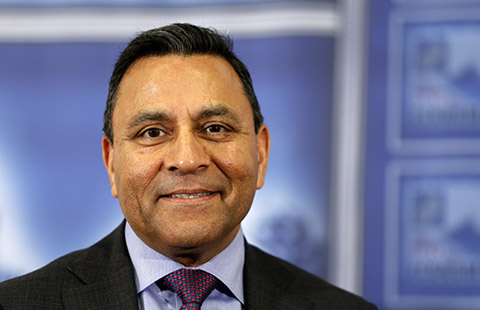China economic restructuring, slowly but surely
Three economists at Barclays Capital coined the term Likonomics named after Premier Li Keqiang's bold initiatives designed to maintain steady and healthy economic development, with less focus on raking in high GDP growth. Likonomics is composed of three parts ending stimulus policies, deleveraging and structural reforms.
Pursuing the above three won't be easy, and the road to economic transformation could be a bumpy one, if it isn't already, with plenty of sacrifice to be made. When the transformation finally ends, China's economy will obtain healthier and more sustainable development, says Zhang.
On June 20, the overnight interbank repo rate shot up to over 30 percent, and the overnight Shanghai Interbank Offered Rate surged 578 points to 13.44 percent, which caused a panic in the capital market. Rumors of a "cash crunch" spread far and wide, and China's stock markets slumped the next day. Unexpectedly, the People's Bank of China didn't come to the rescue, a strategic choice on its part.
As the American economy shows signs of picking up, the Federal Reserve has begun to shake off quantitative easing monetary policies, and the world economy is speeding up its deleveraging. The central bank's refusal to infuse more money into the banking system brings an end to expansionary monetary policies.
In fact, the Central Government has laid emphasis on steady credit growth for the real economy. Recently, Premier Li has reiterated "activating the stock of money and credit," implying an intention to cease the use of expansionary monetary policies.
Although the transformation underway has led to slower growth, the government has no intention of changing course. On July 9, at an economic symposium in Guangxi Zhuang Autonomous Region, Li said, "Macro-control should focus on the pursuit of long-term benefits and ensure the economy is fluctuating within a reasonable range. That is to say, indexes like the economic growth rate and the employment rate shouldn't break the bottom line, and price rises shouldn't exceed the upper limit."
Although Li didn't offer specifics, experts say his "bottom line" refers to a minimum of 7.5-percent annual economic growth and at least 9 million new jobs for rural and urban residents. His "upper limit" refers to no more than a 3.5-percent rise in the Consumer Price Index (CPI) this year, as laid out in former Premier Wen Jiabao's government work report in March.
At present, employment and consumer prices are stable. Statistics from the Ministry of Human Resources and Social Security showed the market offered 107 jobs per 100 job hunters in the second quarter, slightly lower than the 110 jobs in the first quarter. According to statistics from the NBS, the CPI rose 2.7 percent year on year.
There are concerns over whether China's economy can stay above the "bottom line," since the 7.6-percent growth in the first half is very close to it. Zhang Monan, associate researcher with the Economic Forecast Department of the State Information Center, suggests the 'bottom line' indicates the government is more tolerant of a slowdown.
"Some people may ask whether the new government can help keep China's economy above the "bottom line." It's difficult to give an answer. But one thing is for sure: Reform means pain," said Zhang Monan.
Guan Qingyou, Deputy Director of Minsheng Securities Research Institute, argued that China should maintain its "bottom line" well into the future. "It's of significance to stabilize growth during economic transformation."
Difficulties ahead
The first half of 2013 has been one of significant changes some good, some bad as China continues to upgrade its economy. For instance, many energy-consuming and high-polluting industries are undergoing technical renovations to prepare for the new economy. On the flip side, domestic consumption hasn't been as robust as the government expected despite plenty of effort over the past few years to get Chinese consumers to open their wallets.

























